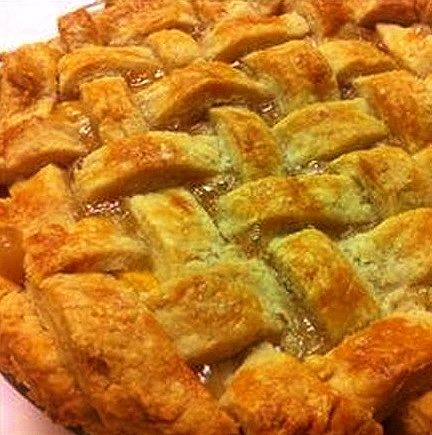Well that time is upon us! What kind of a holiday season are you going to have? I know certain things are totally out of our control, you know stuff like bad weather, disagreements between siblings and their spouses, high-strung nephews and nieces and then there’s uncle Ed who has to watch sports on full-volume and your mother-in-law flying in to surprise you for the holidays. Alas, there’s no need to worry. After all, we do have the recipe for easy, perfectly flaky pie crust so rest assured everything will be a-okay, just take it all in strides and put a deadbolt on that kitchen door while you make your pies, preferably while listening to the soothing sounds of your favorite classical track.
Now back to the dough. If there’s one secret to making good pie dough, it’s don’t care so dern much! That’s right! When people try to make good pie dough, they tend to start fiddling with it and that’s precisely what the dough does not want. So don’t over mix it, don’t over knead it and if you can, measure your ingredients with a digital scale. When it comes to consistency a digital scale is the way to go (I’ve included the measurements in ounces to help). Use one and you’ll soon be whizzing through those recipes.
Perfectly Flaky Pie Dough
You can do anything from sweet pineapple-rhubarb to savory mince with this perfectly flaky crust. Also, this pie dough is a tad more resilient than others so it’s perfectly fine to toss the ingredients into the food processor and say “who’s your mama?!” Just cube the cold butter and add along with the flour and pulse. For a sweet crust, add two teaspoons regular sugar.
Yield: 1, 9” pie crust
Ingredients:
1-1/4 cup all-purpose flour (10 ounces)
1 stick (4 ounces) unsalted butter, cold, cut into ½-inch cubes
1/4 to 1/3 cup ice water (varies)
1/4 teaspoon kosher salt
Procedure:
1. Place flour and salt in large mixing bowl (if sweet, add 2 teaspoons sugar). Using a pastry blender, your fingers or two knives, rub or cut the butter into the flour mixture until the butter pieces are about the size of peas. Very gingerly sprinkle ice water, 1 tablespoon at a time. With a fork, stir and fluff this mixture until clumps begin to form. Pick up the large clumps and squeeze to test for correct moisture by squeezing between thumb and forefinger. If clumps hold together, transfer to a work surface. Repeat adding water, tablespoon by tablespoon to the flour butter mixture in the bowl. Transfer clumps after testing.
2. Now you should have all your flour salt butter mixture converted into dough. If the clumps feel soft and approaching room temperature, cover with plastic wrap and refrigerate for at least thirty minutes. If the dough still feels cold to the touch, knead it 4 to 5 times. If dough falls apart during this process, return it to the bowl and add a teaspoon of ice cold water. Continue until dough just sticks together which is the correct moisture level.
3. Next, flatten the dough into a disk that measures about 6 inches wide. Cover with plastic wrap and refrigerate for 30 minutes before rolling.
4. Lightly coat your work surface with flour. Roll out the chilled dough with a rolling pin into a 12-inch circle. To transfer the dough, roll it around the rolling pin and transfer to a 9-inch glass pie pan. Center the dough as you unroll it from the pin. When the dough is unfurled on top of your pie pan, lift the edges to allow it to fall into the edges of the pan.
5. Trim and crimp dough edge. Chill lined pie pan for at least 30 minutes before baking.
Want more tips for a Better Pie Crust? Here’s five of them.





